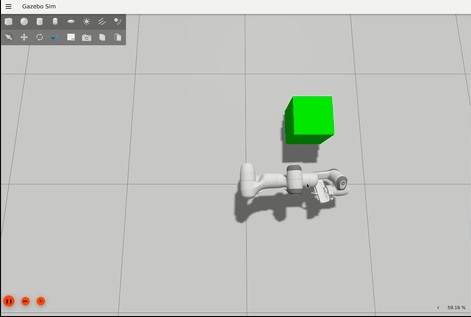|
Listen to this article  |
Open Robotics recently released Gazebo Harmonic, which is the eighth version of its open-source simulator. The company said this is one of its biggest Gazebo releases to date. You can find a complete list of the new features here, but we’ll highlight some of them below.
A major upgrade, it said, is that users can now write their own Gazebo plugins in pure Python. This was done by adding Python bindings to gz-msgs, gz-transport and other Gazebo systems to improve the user experience.
Open Robotics also said it is now easier to debug and inspect using the Gazebo CLI. The CLI now lets users list subscribers and their topic information using a CLI command. There’s also a new mouse drag functionality that allows users to interactively apply forces and torques to links in a simulation while physics is running.
Gazebo Harmonic can now automatically calculate moments of inertia for files that use SDFormat. This demo shows two cylinders: one with default inertial values (right, green) and the other with automatic inertia calculations enabled (left, yellow). The moment of inertia (magenta) for the yellow cylinder matches the mesh shape indicating that the calculated values are more realistic for cylinders than the bounding box moment of inertia used previously.
 Submit a session abstract now to be an event speaker. Submission Deadline: December 15, 2023
Submit a session abstract now to be an event speaker. Submission Deadline: December 15, 2023
The camera and optics features have been upgraded “significantly” to improve the realism of simulated cameras. For example, users can now simulate wide-angle lens cameras and use custom intrinsic matrices in their virtual cameras, which the company said makes it easier for simulated cameras to match real-world cameras. Users can also now output image data in Bayer format and use 16 bit depth, just like in many commercial machine vision cameras.
And for better simulations of outdoor environments, users can now add custom optical effects in Gazebo Harmonic. You can now include lens flares to better replicate the real world. The simulator also now supports global illumination using two methods: Voxel Cone Tracing (VCT) and Cascaded Image Voxel Cone Tracing (CIVCT). A GUI plugin is provided for each global illumination technique and offers a number of configurable parameters such as bounce count and voxel resolution that affect the quality of the resulting scene.
Finally, Gazebo Harmonic added features for developers of maritime robotics systems, which the company said have been using the simulator more in the past year. One new feature is the inclusion of fluid added mass, which the company said helps maritime roboticists account for the amount of extra power required to move the water around a vessel when planning how much power to deliver to their propulsion systems. And the new Doppler Velocity Log plugin can be used to measure the velocity relative to a ground plane once the robot is underway.
Intrinsic, a software company that launched out of the X moonshot division of Alphabet in mid-2021 to simplify the use of industrial robots, acquired the Open Source Robotics Corporation (OSRC) in late 2022. OSRC is the for-profit arm of Open Source Robotics Foundation, which is the developer of the Robot Operating System (ROS). Intrinsic also acquired Open Source Robotics Corporation Singapore (OSRC-SG), the division of the company that led directly to the release of Open-RMF for interoperability.
The Open Source Robotics Foundation (OSRF) is continuing on as the independent nonprofit it’s always been. At the time of the acquisition, OSRC said this would mean no disruptions in the day-to-day activities for ROS, Gazebo, Open-RMF, and the entire community.
Credit: Source link


Comments are closed.